Top 10 AI Translation Software: Power Growth and Communication
In an increasingly interconnected world, effective communication across languages has become an essential pillar for successful global business operations.
This comprehensive article explores the intricate workings of AI translation software, highlighting its underlying technologies, practical applications, and the transformative potential it brings to language translation.
- Understanding AI Translation Software
- How AI Translation Software Works
- Top 10 AI Translation Softwares that Power Growth and Communication
- Applications of AI Translation Software
- 4 Benefits of Implementing AI Translation Software
- Potential Challenges & Solutions in AI Translation Software
- Future Trends in AI Translation Software
- Spotlight on OLA by OneSky
- Conclusion
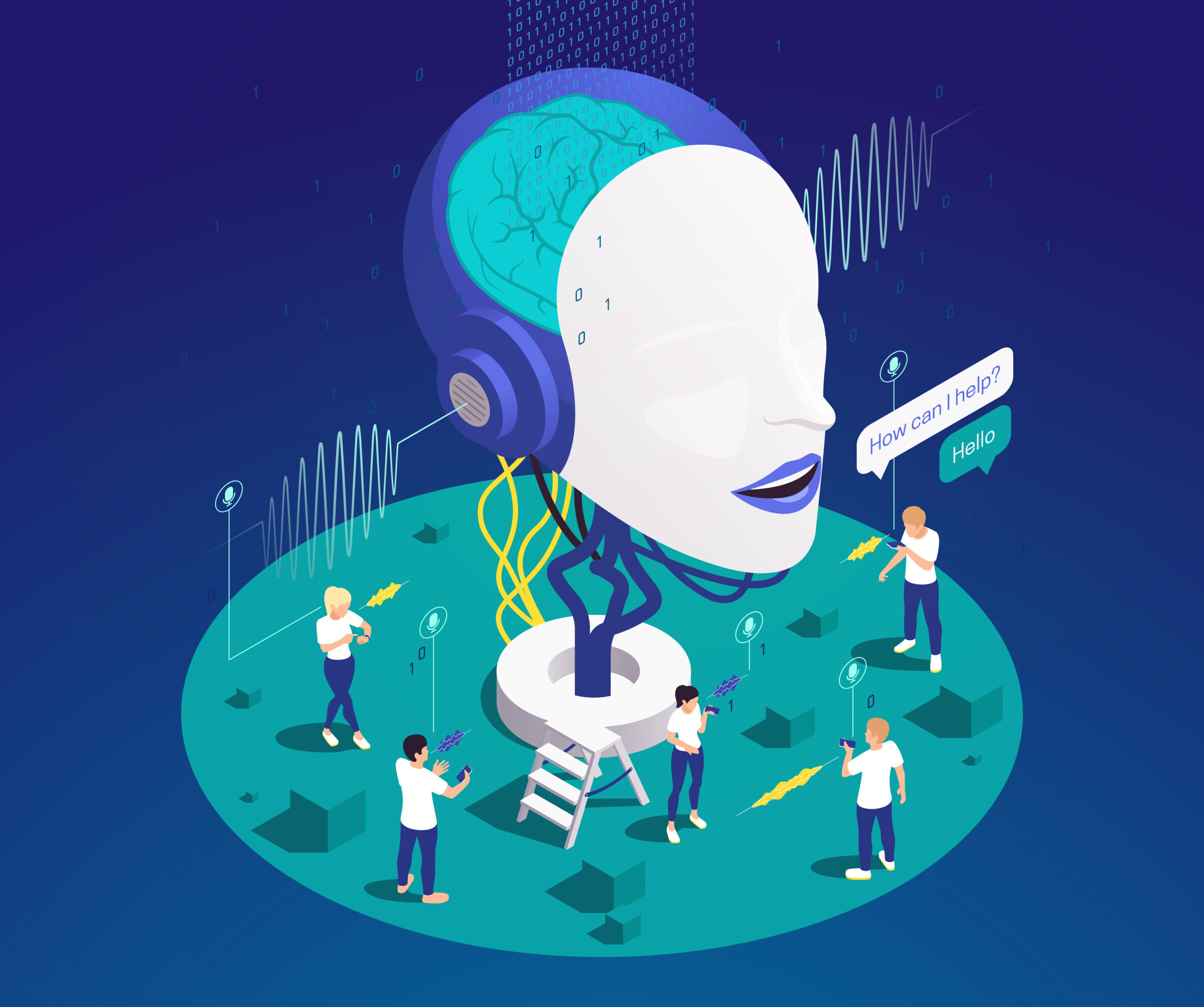
Understanding AI Translation Software
AI translation software is designed to translate text or speech from one language to another using algorithms powered by artificial intelligence.
Unlike traditional translation methods that often rely heavily on human translators, AI translation solutions efficiently process and translate vast amounts of text with remarkable speed and contextual accuracy.
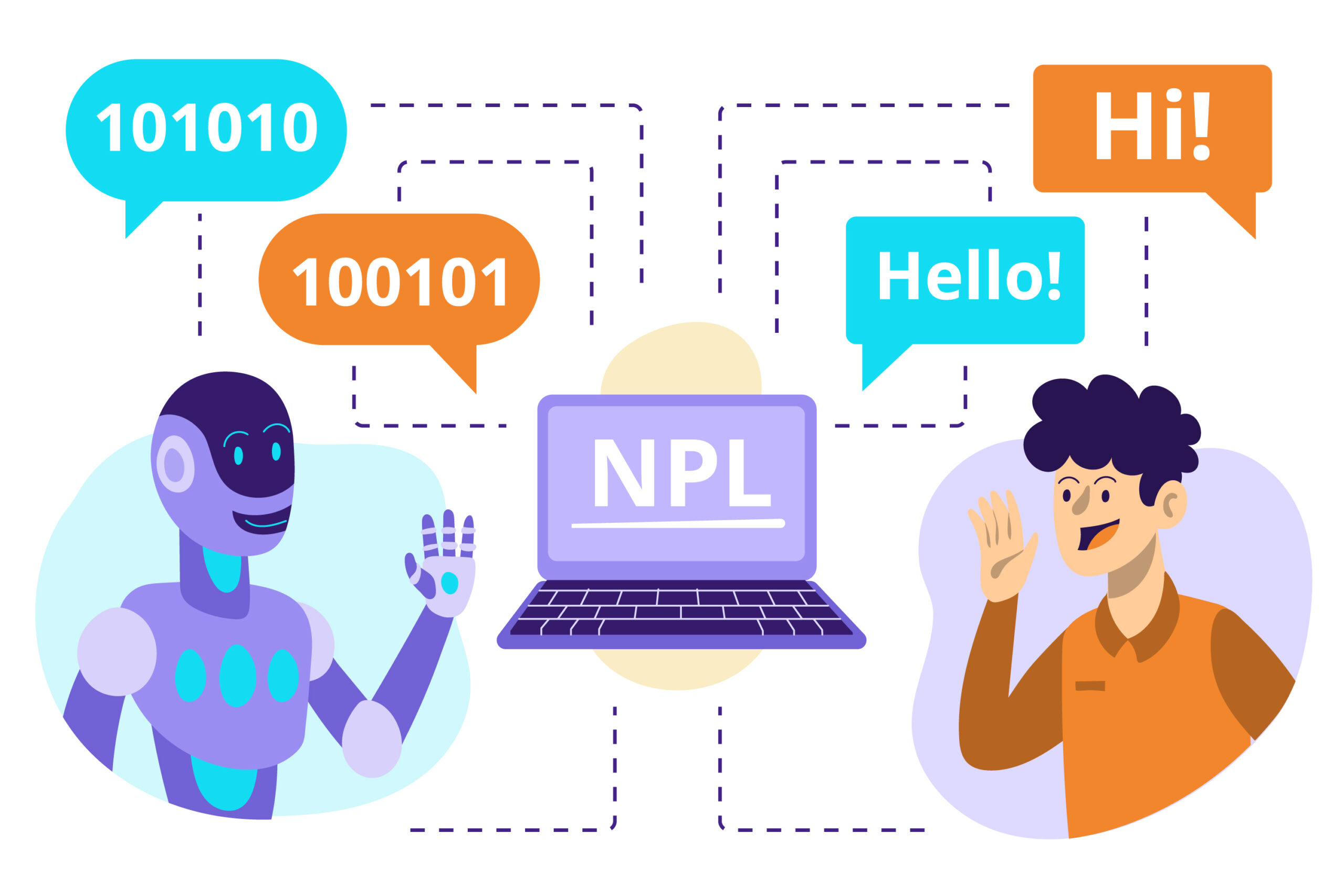
How AI Translation Software Works
The process of AI translation involves several key stages, each critical for delivering high-quality, context-sensitive translations.
Let’s break down these stages with OneSky Localization Agent (OLA) by OneSky as a powerful case study to illustrate how these components come together effectively.
- Input Processing: The first step of the translation process is receiving the input text. OLA expertly tokenizes this content, breaking it down into manageable units, such as words or phrases. This foundational analysis simplifies the translation task and lays the groundwork for a more thorough understanding of the text’s meaning.
- Language Analysis: Once tokenization is complete, OLA harnesses advanced Natural Language Processing (NLP) algorithms to analyze the source text. This analysis is key to extracting meaning and context, allowing the system to identify grammatical structures and subtleties that impact the overall translation quality.
- Translation Generation: In this stage, OLA employs sophisticated machine learning models to generate translations based on the language analysis. Utilizing cutting-edge deep learning techniques, the software ensures that each translation not only flows naturally but also closely aligns with the intended message. The use of Neural Machine Translation (NMT) allows for contextual understanding, resulting in translations that sound authentic and engaging.
- Post-Editing and Quality Assurance: After the initial translation is generated, OLA incorporates human expertise into the workflow. This human-in-the-loop approach brings seasoned linguists into the process, who meticulously review and refine the AI-generated translations. Their insights are invaluable in ensuring that the final output is accurate and culturally relevant, preserving emotional tones and nuances that might otherwise be lost.
- Feedback Loop: Once the translation is delivered, OLA actively collects user feedback. This feedback process allows the model to learn and adapt based on real-world interactions, leading to continued improvements in translation quality. By analyzing user responses and preferences, OLA evolves to provide even more precise translations over time.
Why is AI Translation Software so Powerful?
AI translation softwares like OLA exemplify the strength and capabilities of modern AI translation software, showcasing several advantages:
- Organizational Structure: OLA employs a diverse team of AI agents, each with designated roles such as Translator, Voter, Domain Researcher, and Editor. This structured approach mimics a real-world linguistic team, ensuring that translations are not only high-quality but also well-aligned with your specific project requirements.
- Expert Human Involvement: The integration of human evaluators within the AI translation process not only guarantees accuracy but also enhances the cultural and contextual sensitivity of translations. OLA’s Human-In-The-Loop feature effectively combines technological efficiency with the discerning expertise of human linguists.
- Rapid Scalability: With OLA, organizations can produce fast and scalable translations, allowing them to swiftly enter new markets and launch localized products. The ability to generate high-quality translations across multiple languages in a fraction of the time enhances business agility and responsiveness.
Utilizing OLA as a case study, we can see how AI translation software functions in practice, demonstrating its effectiveness in addressing complex multilingual challenges and fostering authentic communication across cultures.
By embracing this innovative technology, businesses can strategically enhance their global communication efforts and succeed in an increasingly diverse marketplace.
Top 10 AI Translation Softwares that Power Growth and Communication
When choosing an AI translation tool, it is essential to evaluate factors such as the number of supported languages, translation accuracy, and compatibility with existing systems.
Selecting a tool with features that cater to your specific needs—such as contextual translation and customization options—ensures it effectively aligns with your organization’s requirements.
1. Google Translate
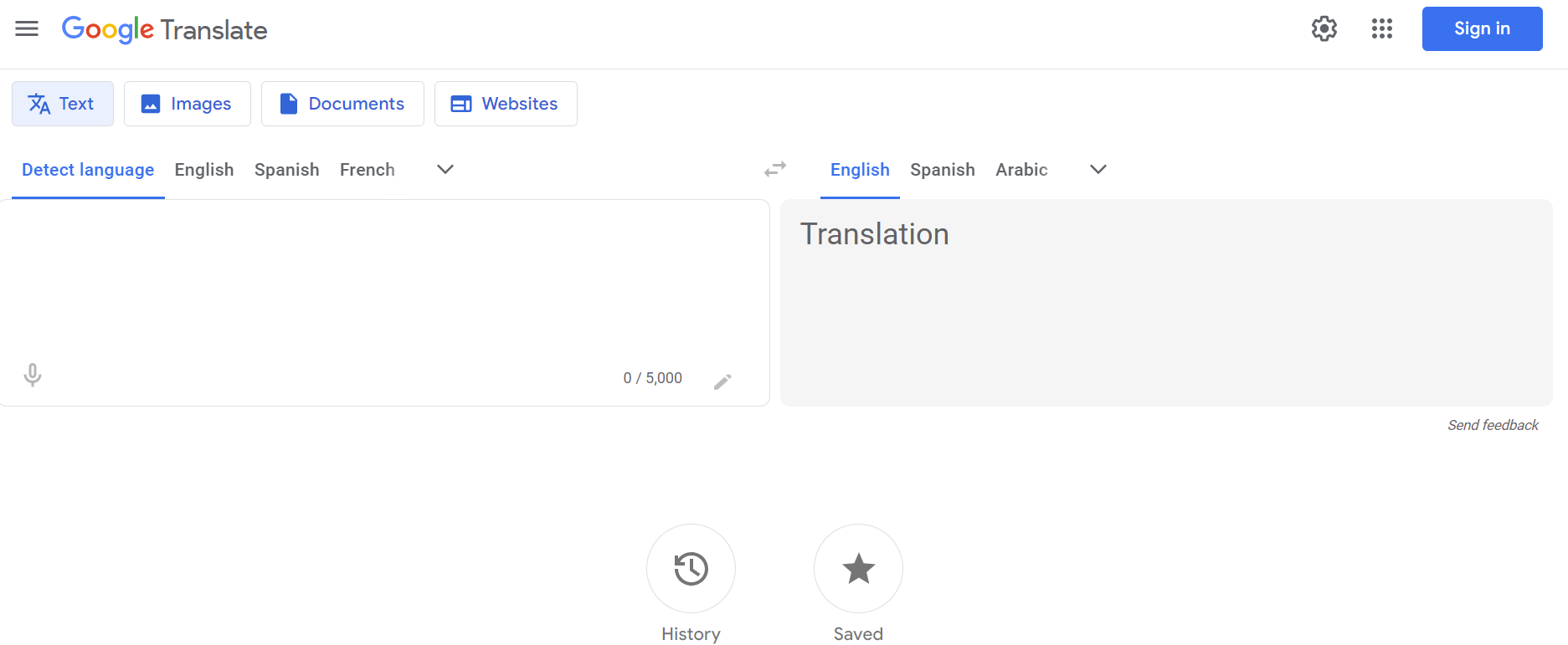
Google Translate provides translation services in over 100 languages, supporting text, voice, and image-based translations. Its versatility makes it suitable for a wide range of applications. The tool enables real-time translations across multiple platforms and facilitates seamless bilingual conversations with automatic speech recognition.
Additionally, it allows users to translate text within various applications and entire web pages. To enhance user convenience, Google Translate offers the ability to save frequently used words and phrases for quick access across devices.
Key Features:
- Instant Camera Translation – Translate text in real-time using your phone’s camera, making it ideal for interpreting signs, menus, and other printed materials.
- Offline Translation – Download language packs to access translations without requiring an internet connection, ensuring uninterrupted service in any environment.
- Multiple Input Methods – Supports text typing, voice input, and handwriting recognition, allowing translation of characters and words not available on standard keyboards.
2. DeepL
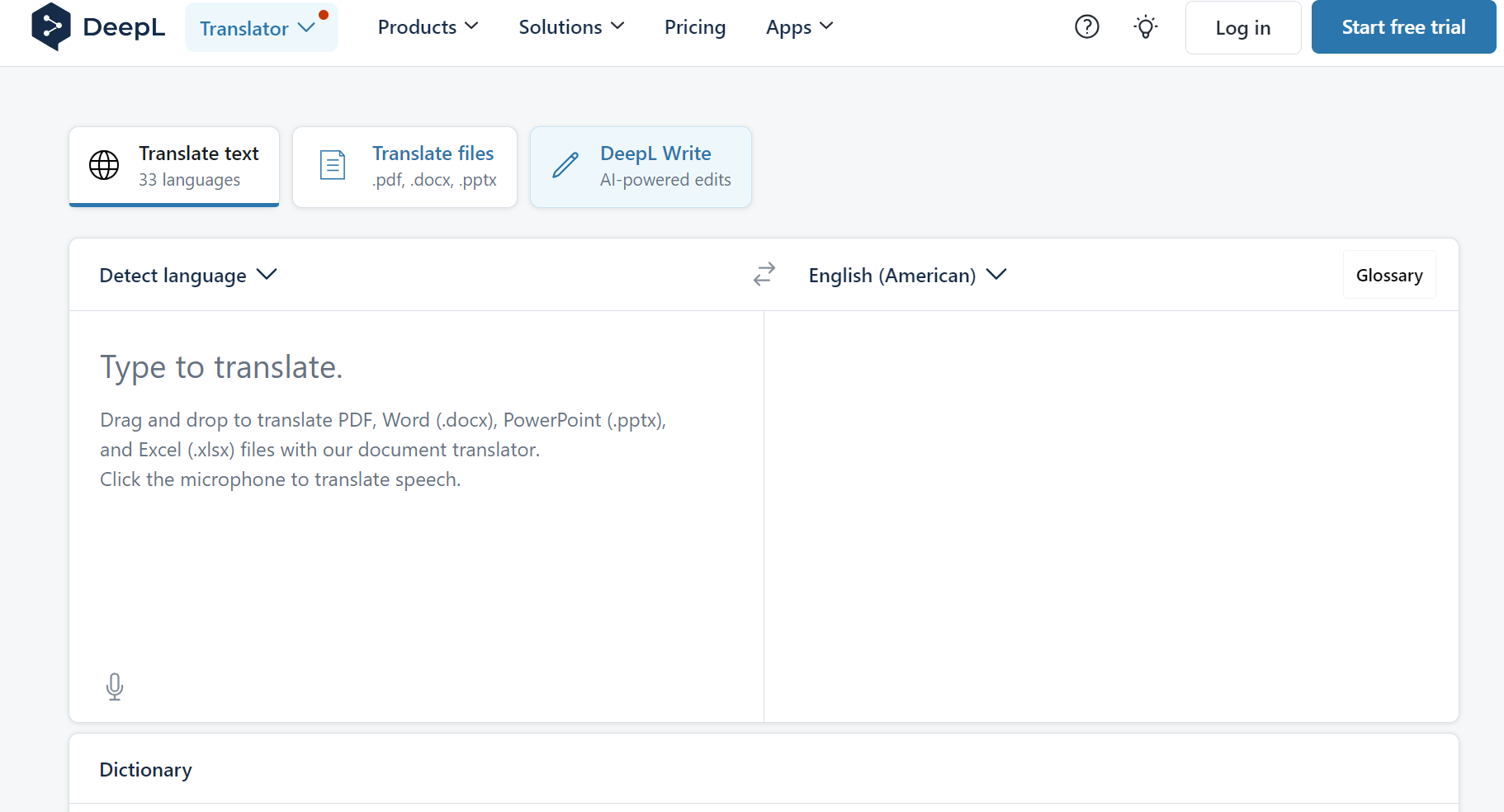
DeepL Translator provides a robust translation solution, supporting more than 30 languages. It enables businesses to expand their global reach while preserving the nuances and contextual accuracy of the original text.
With enterprise-grade security, DeepL ensures data protection and complies with industry standards such as ISO 27001 and GDPR.
Additionally, features like customizable glossaries and Single Sign-On (SSO) access streamline the translation process, enhancing both efficiency and reliability.
Key Features:
- Developer Integration – Offers seamless integration for developers, allowing them to customize translation workflows across internal and external systems while ensuring high-quality translations and secure deployment.
- Comprehensive API Support – Provides detailed API documentation, client libraries, and an active developer community to facilitate easy implementation and ongoing support.
- Productivity Enhancement – Boosts efficiency by integrating with productivity tools such as Microsoft 365 and Google Workspace, while also offering browser extensions for web page translation and writing refinement.
While these tools each bring unique advantages, they also have limitations, particularly regarding cultural nuance and context sensitivity.
That’s where a more advanced but easy-to-use solution can make all the difference — OLA.
3. OLA by OneSky
OLA is an innovative solution designed to elevate localization efforts in ways that traditional tools may not fully address.
What sets OLA apart is its ability to blend cutting-edge technology with a human touch, ensuring translations that are not only accurate but also culturally and contextually resonant.
AI Translations That Feel 100% Human
OLA doesn’t just rely on automated processes; it create a Virtual Localization Team powered by specialized AI agents and advanced Large Language Models (LLMs) like Claude, GPT, and Gemini.
Each AI agent plays a specific role—whether as a Translator, Voter, Domain Researcher, Editor, Quality Evaluator, or Localization Manager—mimicking the structure of a proficient linguistic team. This structure ensures that your translations capture the essence of your brand while meeting local expectations.
With our Human-In-The-Loop approach, it merge the precise capabilities of AI with the nuanced understanding of seasoned human evaluators.
The result? Translations that uphold your brand’s integrity and engage effectively with local audiences.
Utilizing Multiple LLMs for Precision
Why settle for just one translation method when you can tap into the strengths of multiple LLMs?
OLA meticulously selects the most appropriate translation option by evaluating various models, ensuring that every piece of content meets your specific needs.
This intelligent strategy guarantees that your voice resonates across languages—whether in marketing materials, product descriptions, or customer communications.
Statistics reveal that businesses using AI translation solutions enjoy a remarkable 32% reduction in time-to-market for their localized products. This means you can swiftly respond to emerging opportunities while maintaining a competitive edge.
Fast, Unlimited Translations for Global Growth
In today’s rapidly evolving business landscape, speed is crucial.
With OLA, you can launch localized products and campaigns faster than ever. Imagine receiving high-quality translations in multiple languages within mere minutes.
This impressive speed not only positions your business to react promptly to market demands but also empowers you to seize opportunities with confidence, thereby maximizing your potential for global growth.
Versatile Localization for Every Need
The versatility of OLA makes it an ideal partner for a wide variety of localization requirements.
Whether you’re rolling out a new mobile app, localizing an engaging game, or refreshing your website’s content, OLA has you covered:
- Mobile App Localization
In a world where mobile applications are vital for customer engagement, OLA accelerates your app’s global launch. Our translations are designed to ensure your app remains functional and appealing to local users.
With our Mobile App Localization Services, you can guarantee your app speaks the language of its audience and aligns with their cultural expectations.
- Game Localization
The gaming industry demands meticulous attention to detail and creativity in translations. OLA enables game developers to connect with players worldwide by delivering immersive translations that capture the essence of the game. Our service enhances narratives and character dialogues, ensuring that they resonate across languages.
Explore our Game Localization Solutions for connecting gamers with unique experiences globally.
- Website Localization
Your website is often the first introduction customers have to your brand. OLA ensures that all your online content speaks clearly and effectively to local audiences.
Through our Website Localization Options, you can ensure that every aspect of your digital presence reflects your identity while engaging diverse target markets.
Effortless to Use and Manage
Managing your localization process has never been easier.
OLA ’s advanced system offers seamless API integration, allowing you to manage your content across multiple platforms effortlessly. With instant translations powered by cutting-edge AI technology, you can significantly streamline your localization workflow.
With OLA , navigating the translation landscape is not just manageable; it’s an efficient and smooth process.
4. Amazon Translate
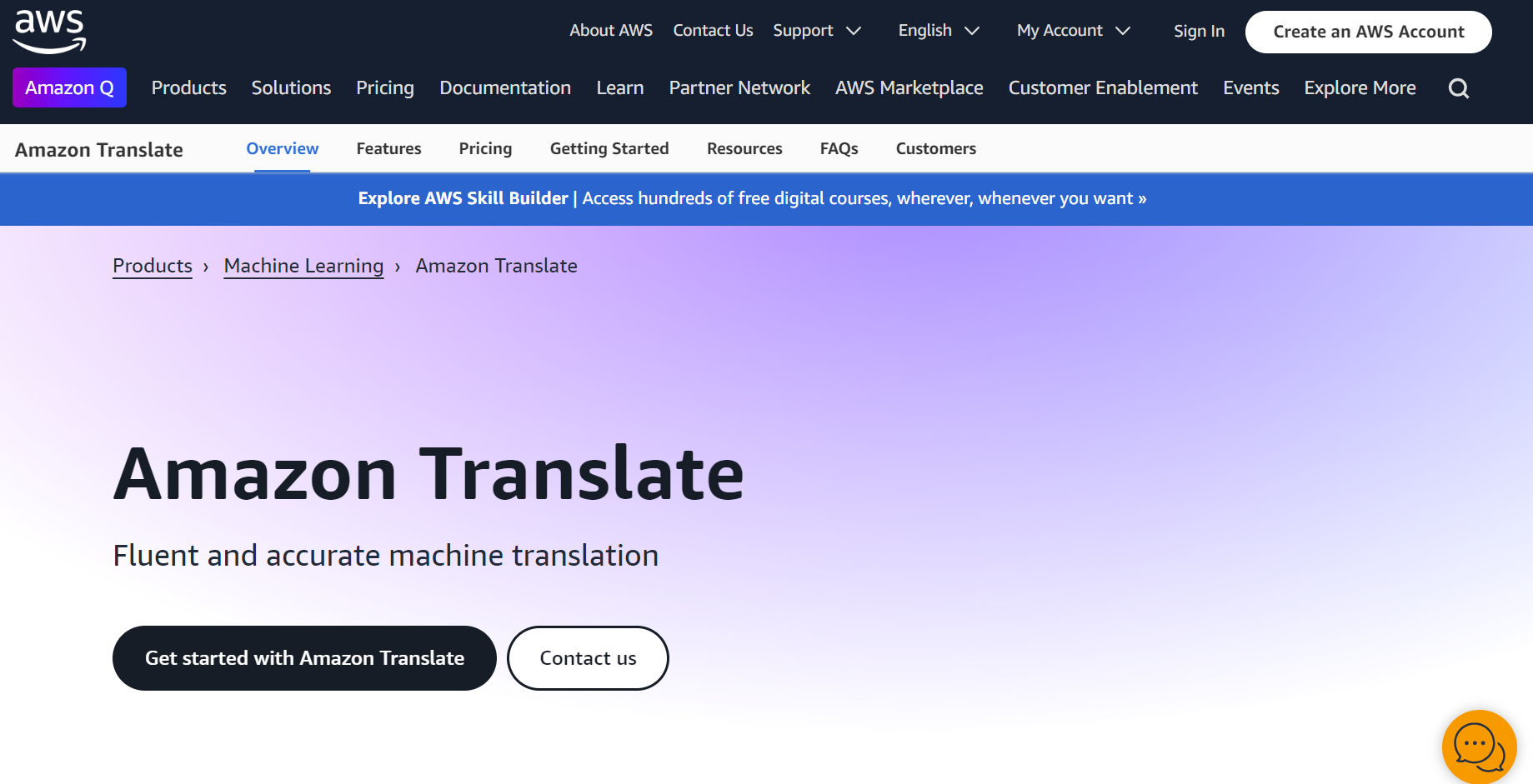
Amazon Translate leverages deep learning technology to help businesses localize content efficiently, enabling them to reach a diverse global audience by translating large volumes of text.
With support for both batch and real-time translation, it provides seamless integration through a straightforward API, making it easy to incorporate translation capabilities into various applications.
Additionally, the platform offers customization options, allowing organizations to define specific terminology—such as brand and model names—to ensure the translated output retains the correct tone and style.
Key Features:
- Customizable Machine Translation – Allows users to input parallel data to tailor machine-generated translations to align with their specific requirements.
- Automatic Language Detection – Identifies the source language automatically when unspecified, making it particularly useful for processing user-generated content such as customer reviews and social media posts.
- Real-Time Document Translation – Supports real-time translation for text, HTML, and Docx files. Users can submit documents via the AWS Console, CLI, or SDK API and receive translated versions instantly while preserving the original formatting.
5. Unbabel
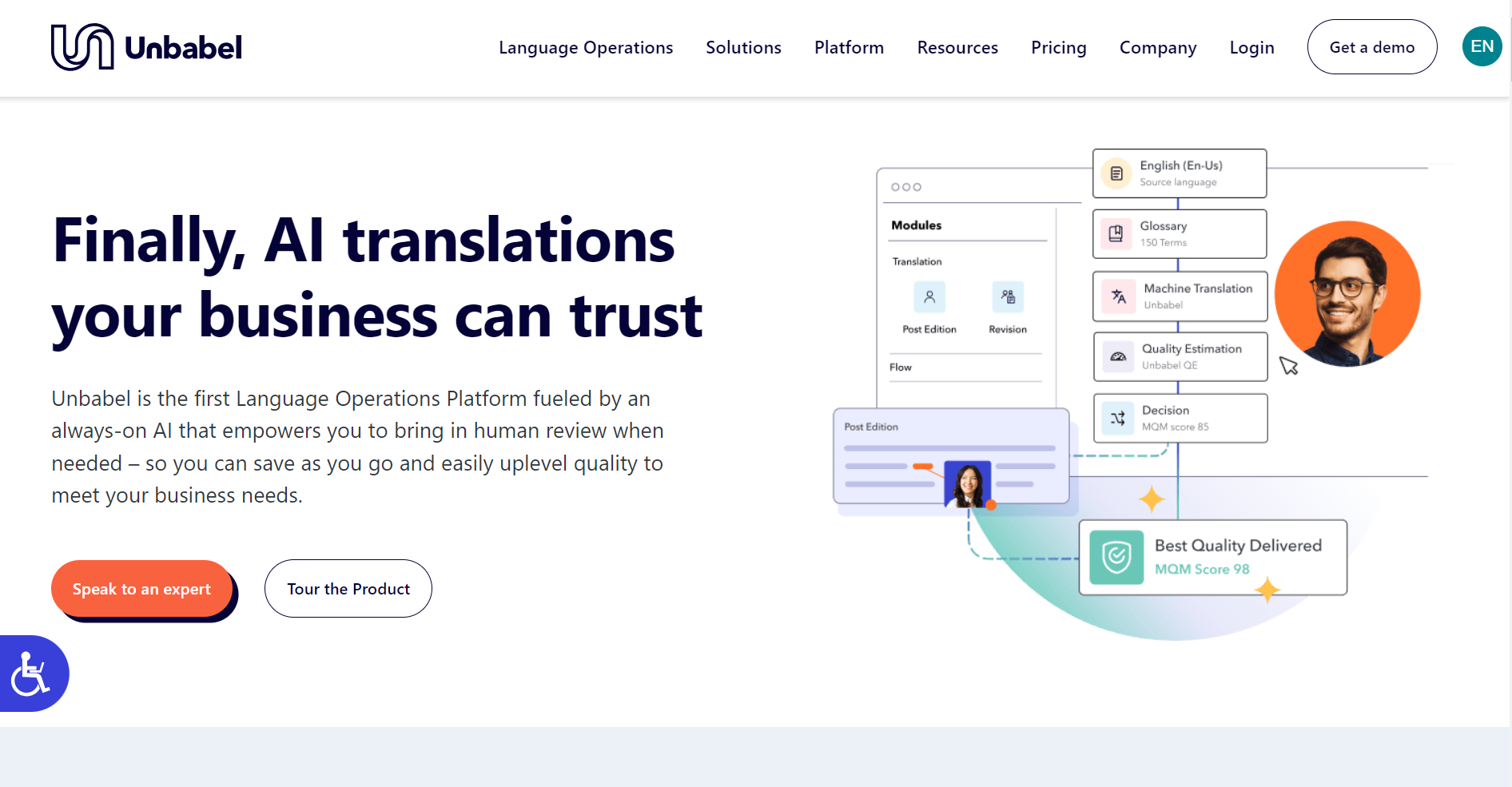
Unbabel is a LangOps (Language Operations) platform that blends AI-powered automation with optional human review to enhance translation quality.
The platform enables businesses to tailor workflows to their specific needs, striking a balance between cost, speed, and translation accuracy.
With its AI-driven quality estimation technology, organizations can track translation performance and optimize results accordingly.
Moreover, Unbabel complies with stringent data protection regulations, including GDPR, CCPA, and ISO certifications, ensuring security and privacy in all translation processes.
Key Features:
- Multichannel Translation Support – Facilitates translation across various platforms, including websites, email marketing, press releases, product descriptions, social media, e-commerce catalogs, marketing materials, and blogs.
- Scalable Multilingual Support – Partners with business process outsourcing providers to offer high-quality and scalable multilingual customer service solutions.
- Seamless Workflow Integration – Works with existing business tools such as Zendesk, Salesforce, and Intercom, ensuring a smooth translation process within customer support and communication platforms.
6. Smartcat
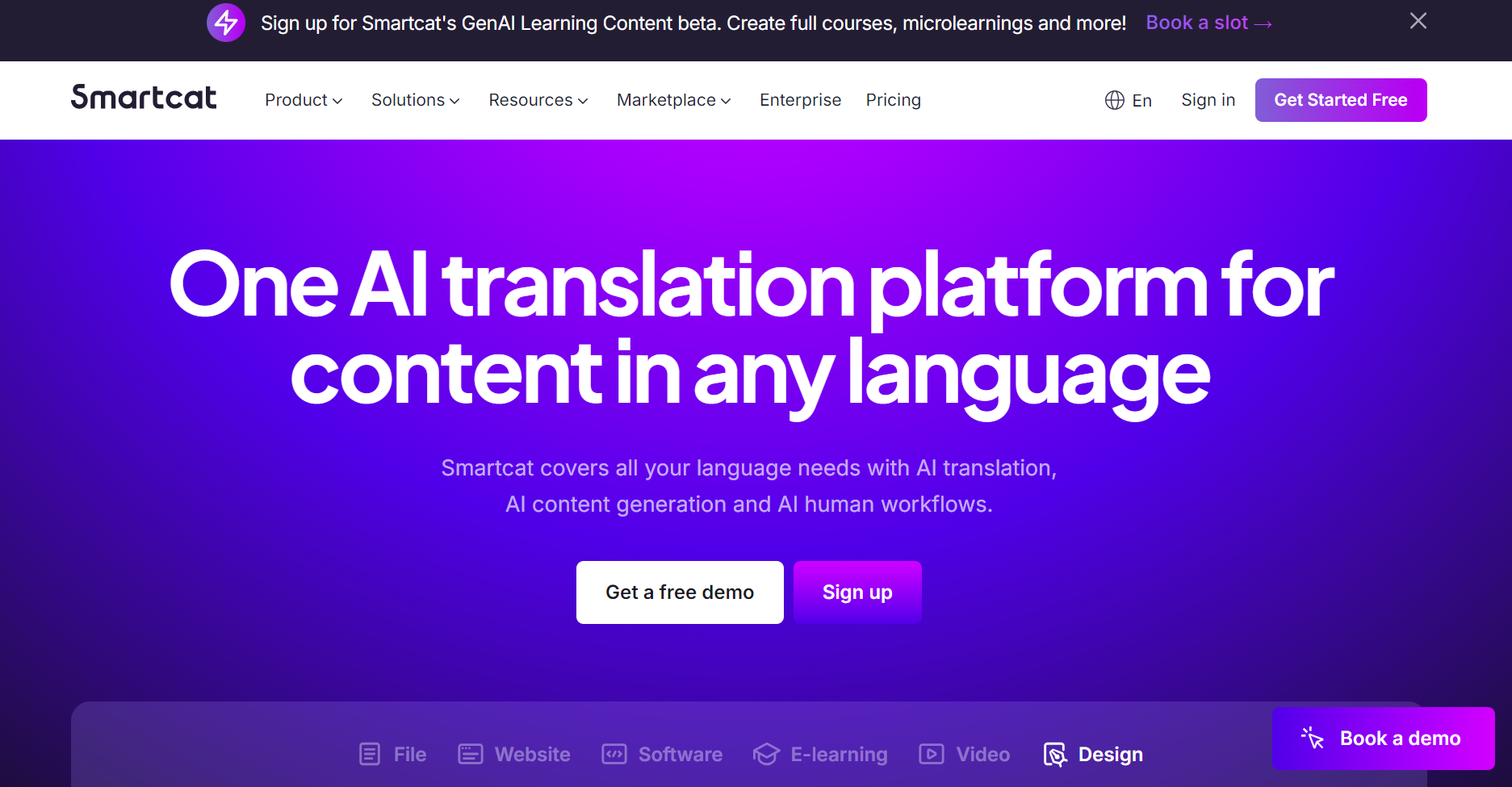
Smartcat offers AI-powered translation for a wide range of content formats, including files, videos, e-learning materials, and websites. Its Website Translation feature enables seamless integration with web pages and content management systems, streamlining the localization process.
The platform also supports collaboration by allowing businesses to invite co-workers and external contributors, making translation workflows more efficient—from simple document translation to real-time website localization.
Additionally, Smartcat’s Linguist Marketplace leverages AI to help users find the most suitable linguists for their projects.
Key Features:
- Seamless Tech Stack Integration – Connects with existing tools and platforms to ensure localized content meets the specific needs of each target market.
- Consistent Brand Messaging – Helps maintain accurate and brand-aligned messaging across all marketing materials for diverse global audiences.
- Advanced Computer-Assisted Translation (CAT) Tool – Combines essential features tailored for localization teams while integrating with platforms such as WordPress, Git, Figma, Google Docs, and Jira to enhance workflow efficiency.
7. QuillBot
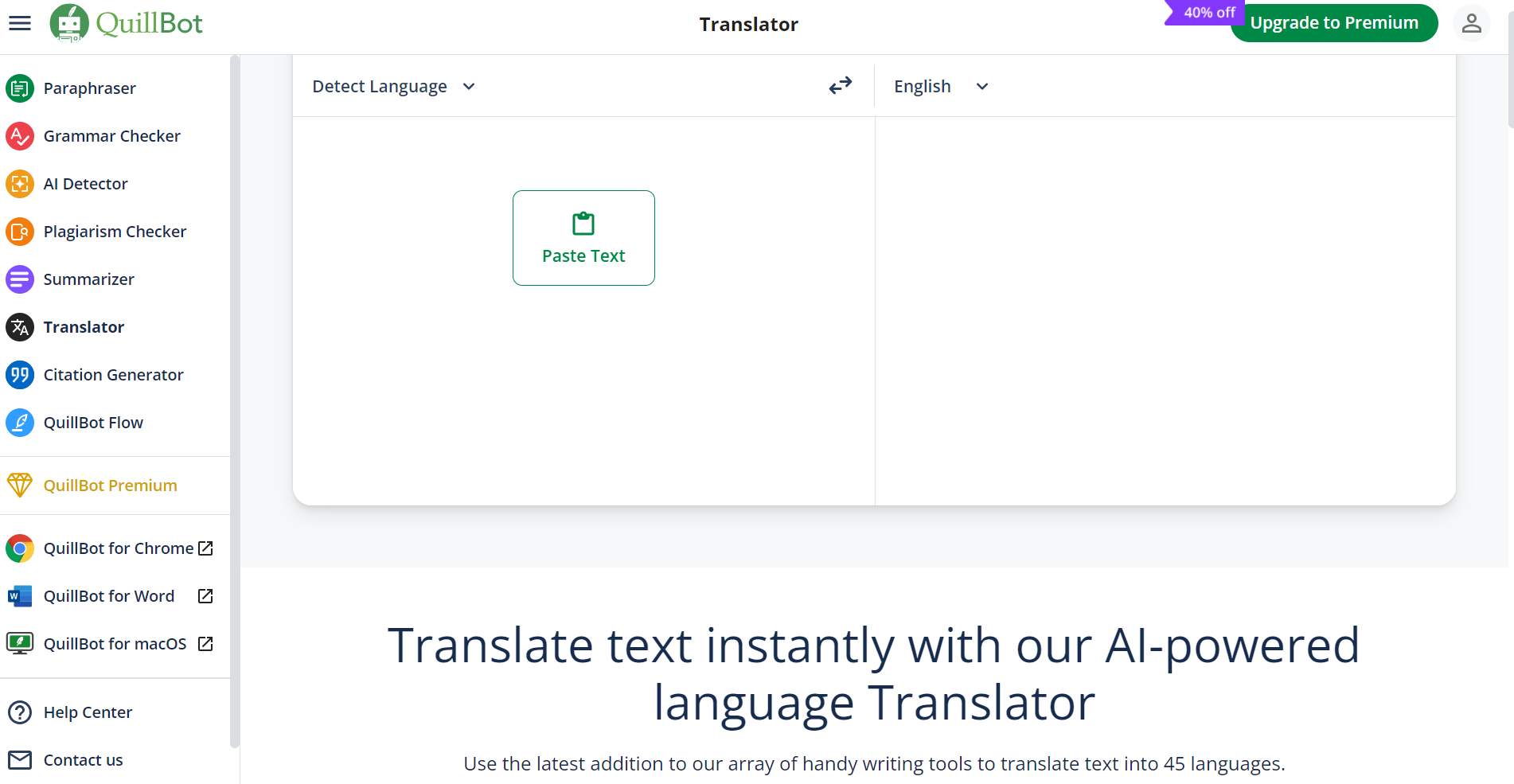
QuillBot is an AI-driven translation tool that supports translation into 45 languages, enabling users to translate text efficiently.
It can process individual words, full sentences, and entire paragraphs, making it a versatile solution for various scenarios, such as travel, research, and language learning.
The platform is accessible online without requiring a download and provides free translation services without advertisements.
Key Features:
- Extended Text Translation – Capable of translating long-form content, making it ideal for comprehensive documents.
- Integrated Editing and Citation – Enables users to edit text and generate citations simultaneously within the same platform.
- Mobile Accessibility – Available on mobile devices, offering convenient translation support while on the move.
8. Mirai Translate
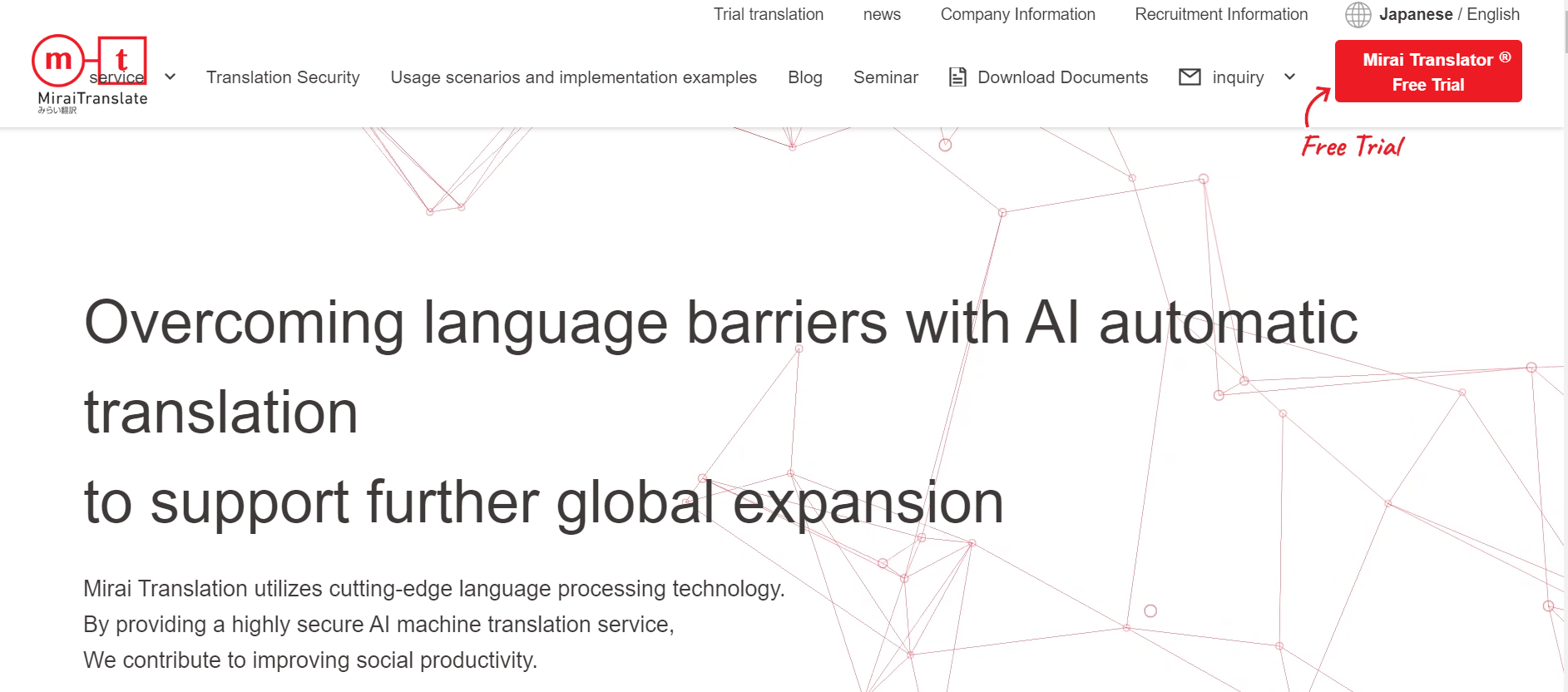
Mirai Translate utilizes a neural machine translation (NMT) engine to facilitate the secure translation of corporate documents.
By leveraging advanced language processing technology, the platform delivers translation accuracy equivalent to a Test of English for International Communication (TOEIC) score of 960, making it highly suitable for business communications.
Mirai Translate complies with the Japanese Ministry of Internal Affairs and Communications standards and holds ISO 27001 and 27017 certifications, ensuring robust security measures.
The cloud-based Mirai Translator® supports multiple languages and various file formats, enabling large enterprises to optimize their translation workflows. Additionally, its speech translation API service enhances multilingual spoken communication, promoting effective global interactions.
Key Features:
- Customizable Translation Memory and Dictionaries – Allows users to store and manage nouns, technical terms, and specific phrases to maintain translation consistency across documents.
- Speech-to-Text and Speech Synthesis – Converts spoken language into text using speech recognition, translates it into the target language, and synthesizes it back into speech, enabling real-time multilingual communication.
- Centralized User and Resource Management – Provides companies with the ability to manage user access and share custom translation resources, such as dictionaries and translation memories, across teams.
- Comprehensive Speech Translation Support – Offers speech recognition, machine translation, and speech synthesis in 12 languages, supporting various multilingual communication tools and applications.
9. Wordly
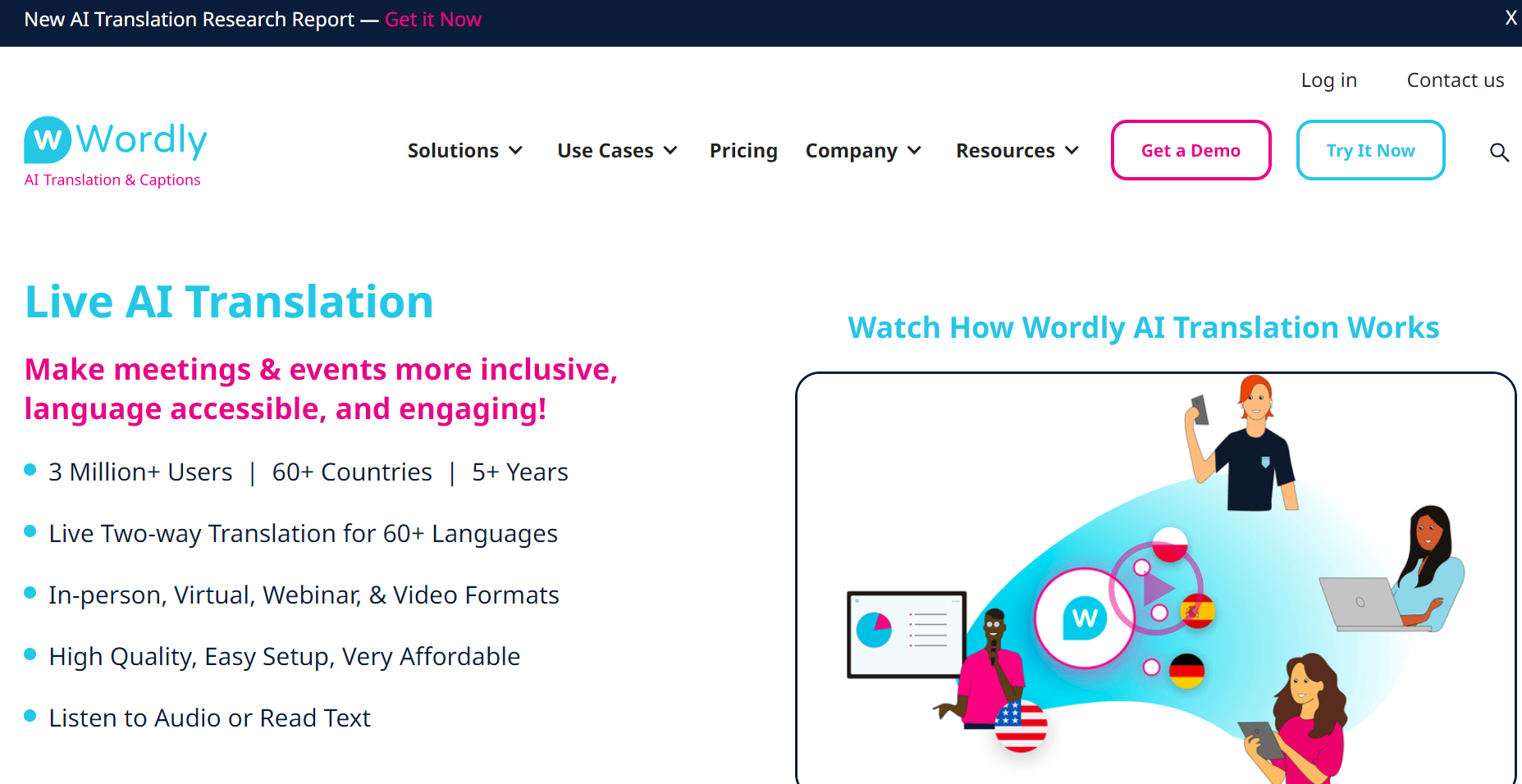
Wordly is an AI-powered captioning tool designed to enhance inclusivity and accessibility in meetings and events, using AI transcription technology.
With support for over 60 languages, it provides real-time two-way translation, enabling both attendees and speakers to communicate seamlessly in their preferred languages, effectively bridging language gaps.
Key Features:
- Customizable Glossaries – Ensures the accurate translation of specific names, industry terms, and brand-specific vocabulary for greater precision.
- Seamless Integration with Event Platforms – Works with major event and communication platforms, including Zoom, Microsoft Teams, and Webex, and is compatible with both in-person and hybrid event formats.
- Multilingual Video Content Translation – Converts video content into the selected language and generates translated subtitles in SRT or WebVTT format, facilitating wider audience engagement.
10. Lokalise AI
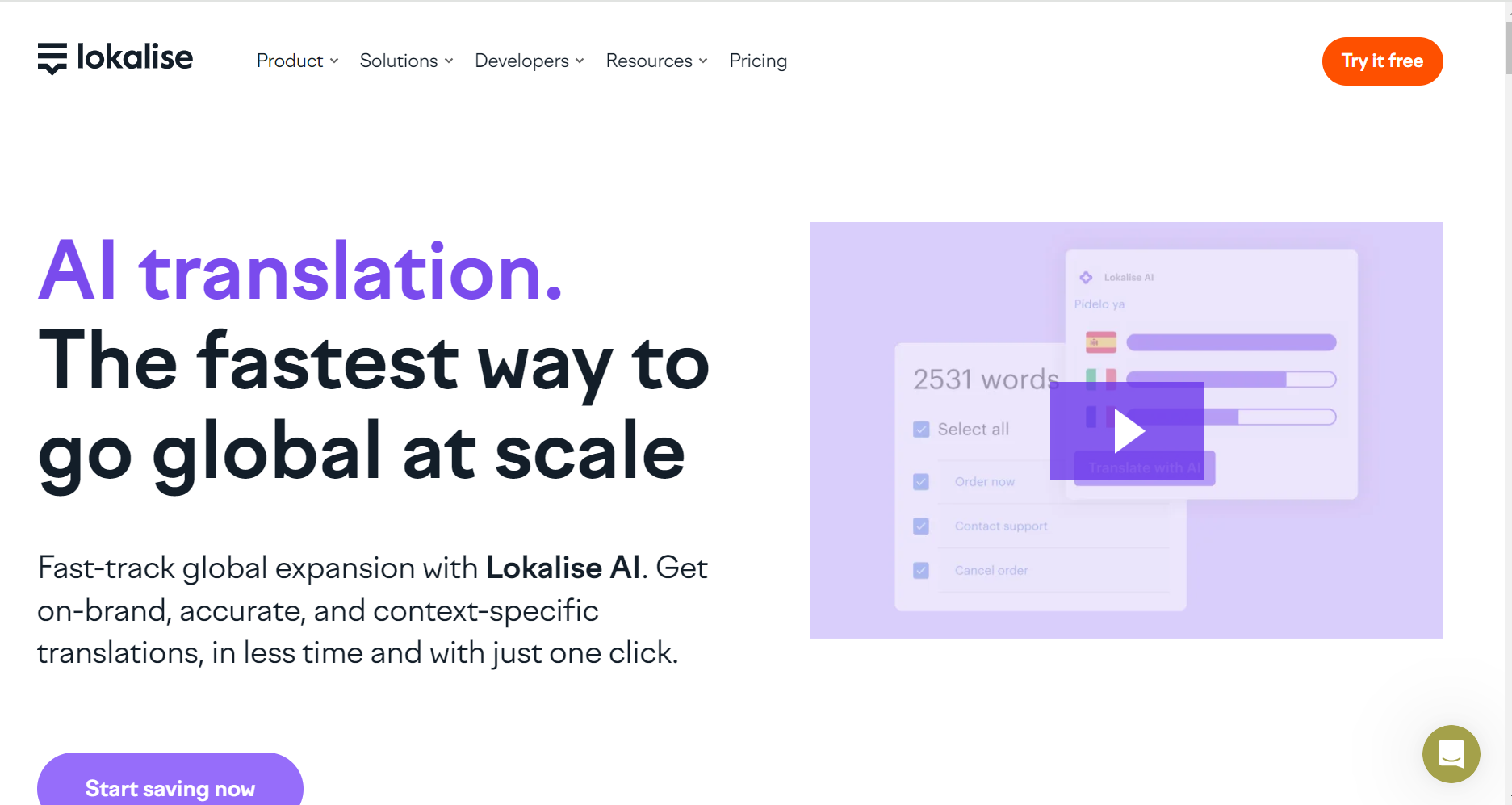
Lokalise AI leverages OpenAI models to streamline the translation process, enabling businesses to translate content into multiple languages with minimal effort. By utilizing AI, the platform ensures translations are contextually accurate, maintaining the appropriate tone and incorporating industry-specific terminology.
Lokalise AI also provides AI-assisted editing suggestions, bulk translation functionality, and AI-powered quality assurance to enhance post-editing accuracy.
Supporting 30 languages, the platform accommodates various content types, including websites, documents, and marketing materials, making it a versatile solution for businesses aiming to expand globally.
Key Features:
- Brand Consistency and Tone Adaptation – Uses glossaries and style guides to align translations with brand messaging while selecting the most suitable translation engine for different content and language pairs.
- Collaborative Workflow Management – Enables teams to manage roles, tasks, and productivity tools within a unified platform, ensuring consistency through quality reports and real-time translation adjustments.
- Enhanced Translation Accuracy – Improves precision with context-sharing tools, in-context editing, automatic text recognition from screenshots, and AI-powered quality assurance.
Applications of AI Translation Software
The versatility of AI translation software makes it suitable for a wide array of industries.
Below are some notable applications:
E-Commerce
In the realm of e-commerce, AI translation software plays a vital role in enabling businesses to reach global customers effectively.
By localizing product descriptions, marketing content, and user reviews in different languages, e-commerce platforms can engage potential customers from diverse backgrounds.
AI solutions ensure that brands maintain a coherent identity across markets while adapting their messaging to resonate with local cultures, ultimately driving sales and customer satisfaction.
Travel and Hospitality
The travel industry significantly benefits from AI translation software by improving communication with international customers.
Hotels, airlines, and travel agencies use translations to ensure that essential information—such as booking confirmations, travel itineraries, and service descriptions—is available in multiple languages. This accessibility enhances the customer experience and fosters brand loyalty by making travelers feel understood and welcomed.
Customer Support
AI translation software is revolutionizing customer support systems by facilitating real-time interactions in multiple languages.
Organizations can deploy chatbots or virtual agents that leverage translation technology to assist customers in their preferred language. This capability not only improves response times but also enhances user satisfaction, as customers can easily communicate their needs and receive prompt assistance.
Education
As education becomes increasingly globalized, institutions are adapting to cater to diverse student populations.
AI translation software allows schools and universities to provide multilingual educational materials, lecture content, and administrative resources. By ensuring that all students, regardless of their language background, have access to critical information, educational institutions can create inclusive environments conducive to learning.
Healthcare
In healthcare, accurate communication is of the utmost importance, as misunderstandings can lead to serious consequences.
AI translation software is employed to translate patient information, medical records, and educational materials swiftly and precisely. This enables healthcare providers to engage effectively with patients from different linguistic backgrounds, ensuring that they comprehend their medical needs and treatment plans.
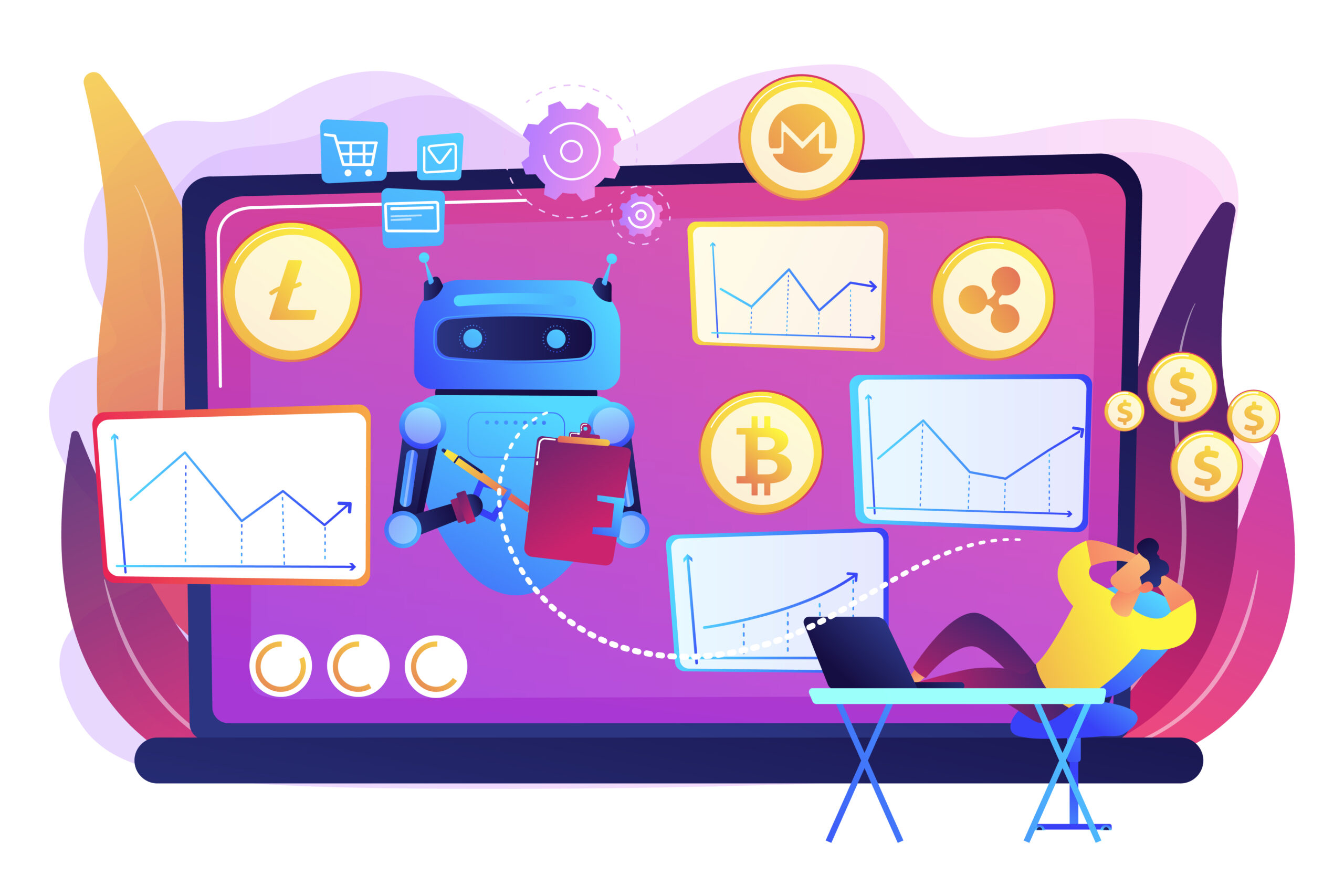
4 Benefits of Implementing AI Translation Software
Implementing AI translation software brings a host of advantages that can significantly enhance the efficiency and effectiveness of multilingual communication.
1. Enhanced Speed and Efficiency
AI translation tools can process vast amounts of text and produce translations in a fraction of the time it would take a human translator. This capability is crucial for organizations that need to respond quickly to market developments or customer inquiries.
Having the ability to instantly localize content allows businesses to stay ahead of their competitors.
2. Cost Savings
Automating the translation process substantially reduces empirical costs. While hiring professional translators for every project can be expensive, AI translation software provides a scalable solution that allows organizations to manage translation needs with minimal investment.
As businesses grow, they can rely on AI translation tools to support increased demand without a corresponding rise in costs.
3. Consistency Across Translations
One of the challenges of multilingual communication is maintaining consistency in terminology and branding across languages.
AI translation software utilizes translation memory systems to store and recall previous translations of specific terms or phrases, ensuring that translations remain consistent throughout the organization’s communications. This uniformity strengthens brand identity and makes interactions more professional.
4. Cultural Sensitivity
AI translation software is now being integrated with features that enhance cultural sensitivity.
By employing culturally aware algorithms and facilitating human oversight, organizations ensure that translations are not only accurate but also considerate of local customs and practices. This attentiveness to cultural nuances fosters deeper connections with audiences, enhancing customer loyalty and overall satisfaction.
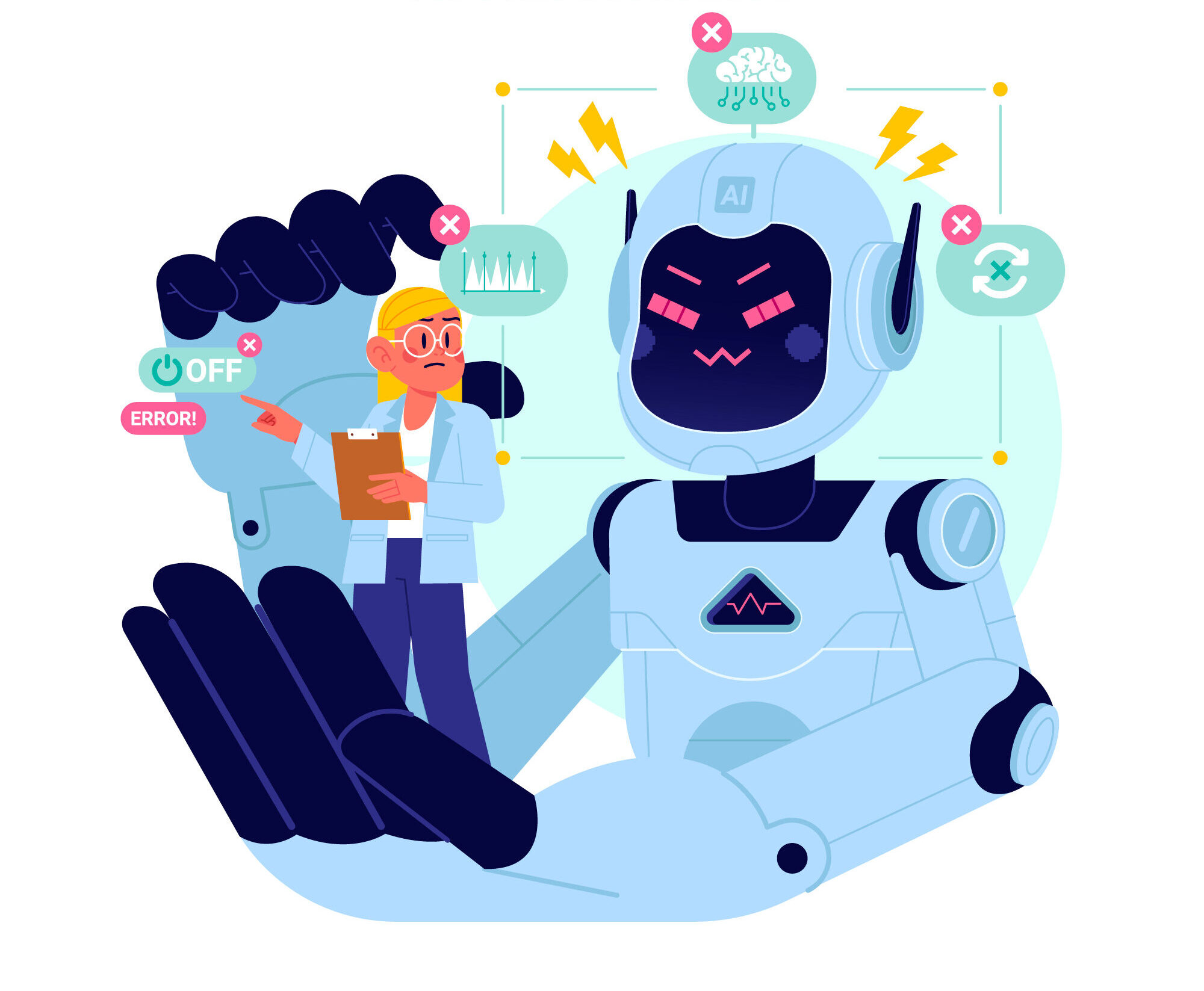
Potential Challenges & Solutions in AI Translation Software
While the pros of AI translation software are compelling, there are inherent challenges that organizations may encounter.
Here are some common potential challenges, along with strategies for overcoming them:
Handling Idiomatic Expressions
Many languages incorporate idiomatic expressions—phrases that have meanings not directly inferred from the individual words. AI translation systems may struggle with these expressions, leading to confusion or misinterpretation.
How to Tackle?
Implementing a hybrid approach that combines AI translations with human oversight can effectively address this issue.
Human translators can provide the contextual understanding needed to adapt idiomatic expressions appropriately, ensuring that translations flow naturally.
Data Privacy Concerns
As organizations increasingly turn to AI translation tools, they must be vigilant about data privacy. Sensitive information, such as customer data or proprietary material, may be susceptible to breaches during the translation process.
How to Tackle?
Organizations should choose AI translation software that complies with data protection regulations (such as GDPR) and utilizes secure data handling practices.
Implementing end-to-end encryption can help safeguard sensitive information. Moreover, conducting regular audits of translation service providers ensures compliance with privacy standards.
Dependence on Quality Data
The effectiveness of AI translation systems largely hinges on the quality of the training data used to create the models. Poorly curated datasets can lead to biased or inaccurate translations.
How to Tackle?
Organizations should ensure that they use diverse and high-quality datasets to train their AI translation models.
Collaborating with linguistic experts can help create balanced datasets that accurately represent the nuances of different languages. Regularly updating the training data to account for evolving language trends is also essential.
The Need for Human Oversight
Despite the remarkable advancements in AI translation, machines may still not fully capture the subtleties of human communication. Contextual nuances, emotional undertones, and cultural references can be challenging for AI to interpret accurately.
How to Tackle?
Adopting a hybrid model that combines AI translation with human post-editing can address this challenge.
This approach allows businesses to leverage AI’s speed and efficiency while ensuring that final translations undergo quality checks by skilled linguists who can evaluate tone, sentiment, and contextual accuracy.
Future Trends in AI Translation Software
The landscape of AI translation software is dynamic, with emerging trends that promise to amplify its capabilities further.
Here are some key trends to watch:
1. Real-Time Translation
As the global workforce becomes more interconnected, there is increasing demand for real-time translation capabilities in business settings.
AI translation tools will evolve to support instant multilingual communication through video conferencing, webinars, and chat applications. This trend will facilitate seamless discussions among participants from diverse linguistic backgrounds, making collaboration more effective.
2. Enhanced Personalization
Future AI translation technology will likely focus more on personalization, allowing users to tailor translations based on their preferences.
By using user profiling and historical data, AI translation systems will produce text that aligns more closely with individual user expectations, further enhancing the user experience.
3. Integration with Other AI Technologies
Integrating AI translation software with other AI solutions, such as sentiment analysis and voice recognition, will create comprehensive communication tools.
Businesses can expect a rise in applications where spoken language is translated in real-time, along with sentiment evaluation, allowing organizations to gauge audience reactions during interactions more effectively.
4. Ethical AI Development
As companies increasingly rely on AI for translation, maintaining ethics in AI development will become paramount. This includes addressing biases in translation data and fostering inclusivity by ensuring that all languages and dialects are represented and respected in AI models.
Organizations will need to prioritize ethical considerations to build trust and credibility in their AI solutions.
5. Autonomous Learning
AI translation systems will move towards greater autonomy, utilizing advanced forms of machine learning to improve continuously.
As translation software increasingly learns from user interactions and feedback, it will adapt to user preferences, handling more complex linguistic challenges naturally. This evolution will lead to increasingly accurate and human-like translations.
Spotlight on OLA by OneSky
As organizations explore AI translation software, OLA by OneSky stands out as an exemplary solution, combining robust technology with intelligent design to address the multifaceted needs of global communication.
Why OLA?
- Advanced AI Framework: OLA utilizes multi-agent AI framework powered by multiple promising large language models that ensure translations are accurate and contextually relevant. Its neural machine translation architecture allows for nuanced understanding, making the software exceptionally adept at handling complex language structures.
- Human-In-The-Loop Model: Unlike many AI translation solutions that operate in isolation, OLA employs a human-in-the-loop approach, allowing professional linguists to refine AI-generated translations. This model ensures that emotional undertones, contextual meaning, and cultural nuances are preserved, resulting in translations that resonate with target audiences.
- Scalability and Flexibility: OLA is designed to scale with your business. Whether launching a marketing campaign across multiple regions or localizing entire websites, this solution can quickly adapt to diverse translation needs, empowering organizations to grow without overwhelming their resources.
- Cultural Sensitivity: With an emphasis on cultural relevance, OLA creates translations that go beyond mere words, embracing local customs and practices. The inclusion of local experts helps tailor translations to specific cultural contexts, ensuring that communications are effective and respectful.
- User-Friendly Interface: OLA features an intuitive interface that simplifies the translation process. Users can manage their translation projects with ease, track progress, and review outputs—all within a centralized platform that promotes efficiency.
Conclusion
AI translation software is at the forefront of bridging language gaps and fostering effective communication in our globalized world.
By leveraging advanced technologies such as natural language processing, machine learning, and neural machine translation, these tools are transforming how individuals and organizations engage across linguistic boundaries.
The benefits of implementing AI translation software are manifold, offering enhanced speed, accuracy, cost savings, consistency, and cultural sensitivity. However, businesses must also navigate the challenges inherent in this technology, such as managing language complexities, addressing data privacy, and ensuring quality through the necessary human oversight.
As we look to the future, AI translation software will continue to advance, embracing trends like real-time translation, enhanced personalization, and ethical AI development. The integration of AI translation tools with other emerging technologies will further expand their capabilities, allowing organizations to deliver seamless multilingual communication.
OLA by OneSky exemplifies these advancements, harnessing the power of artificial intelligence while combining it with human expertise to provide a versatile and effective translation solution.
By adopting OLA, businesses can not only streamline their translation processes but also enhance the quality and cultural relevance of their communications, ultimately building stronger connections with their global audiences.

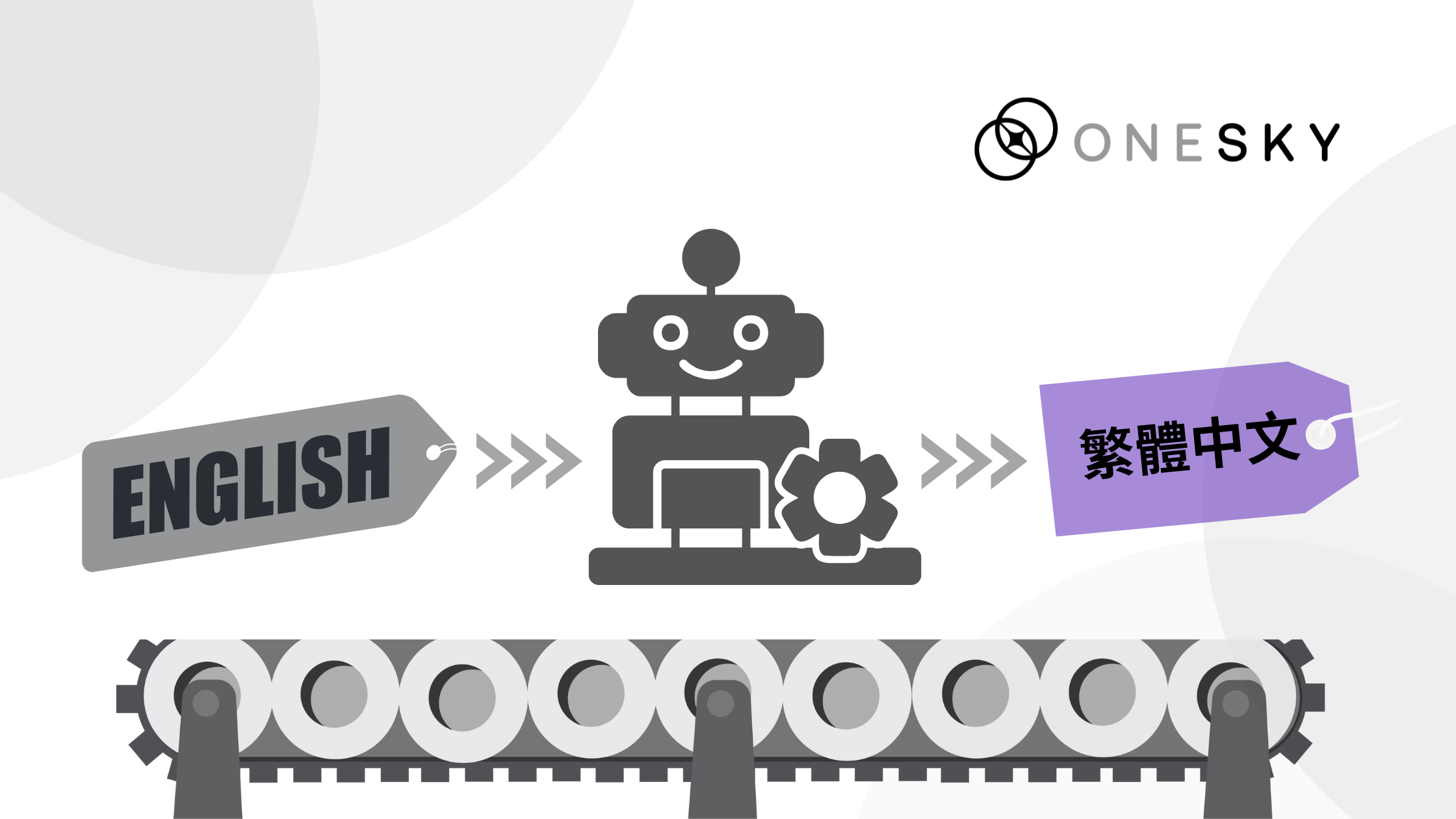
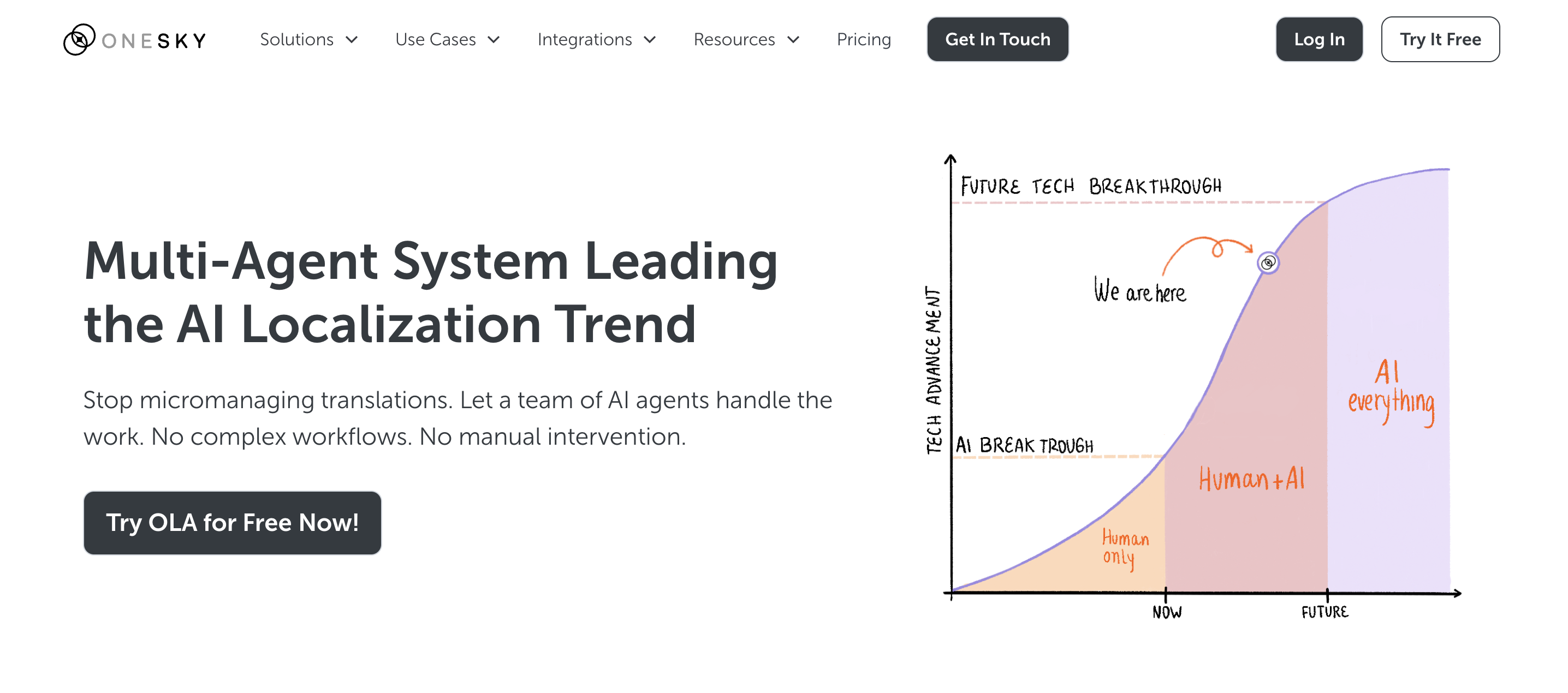
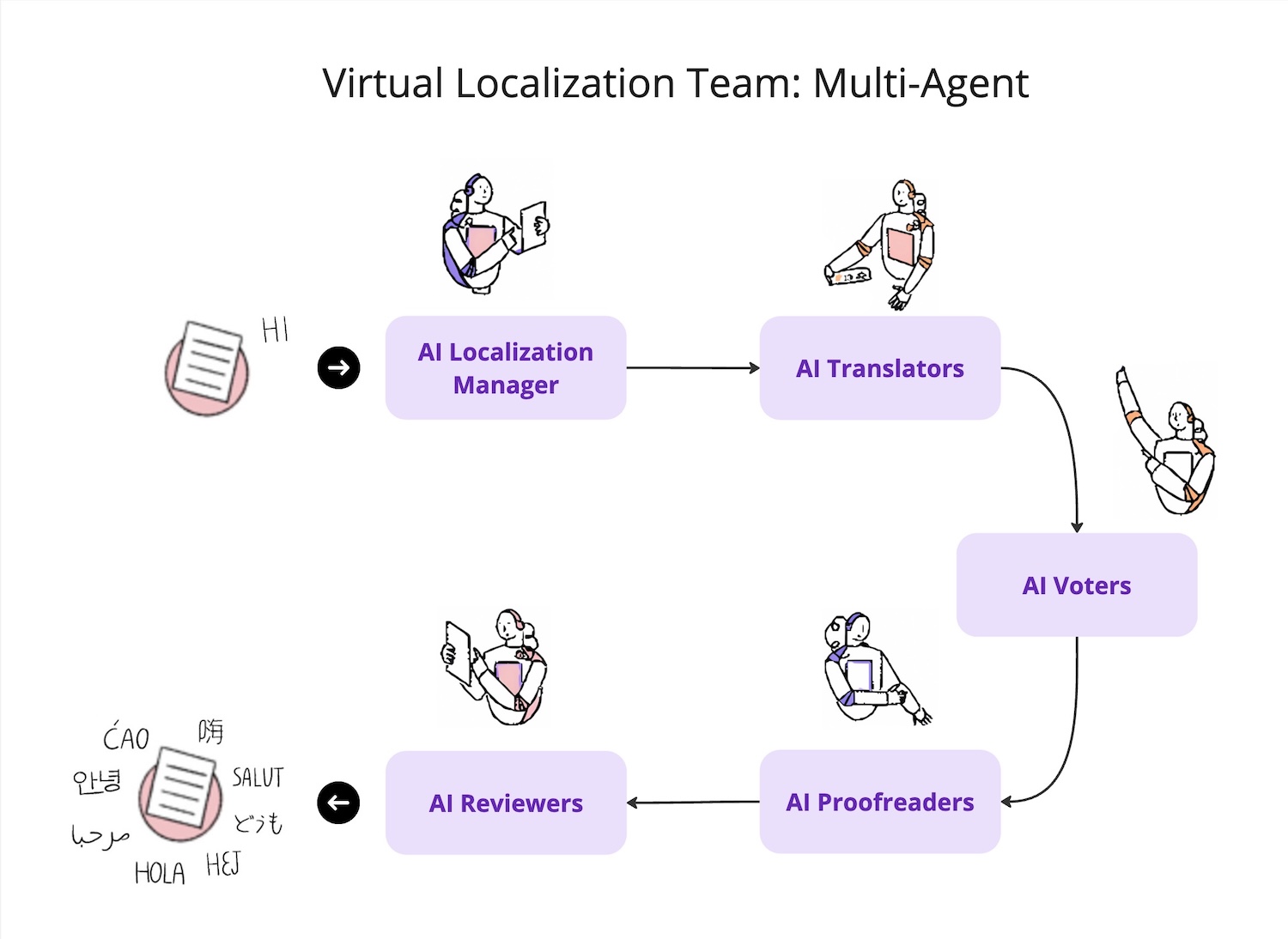
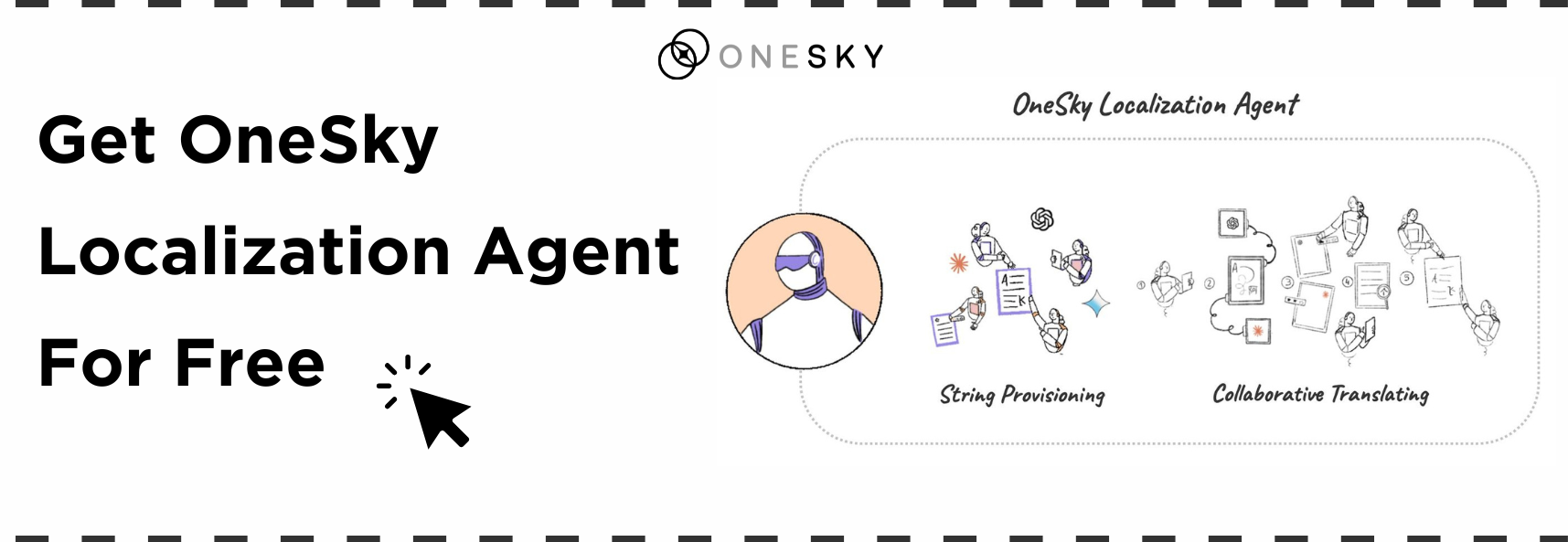

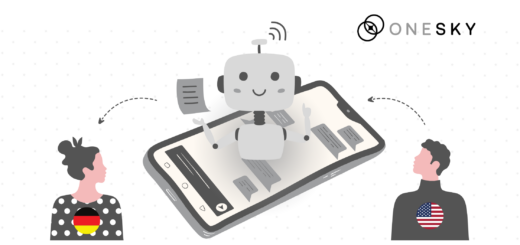
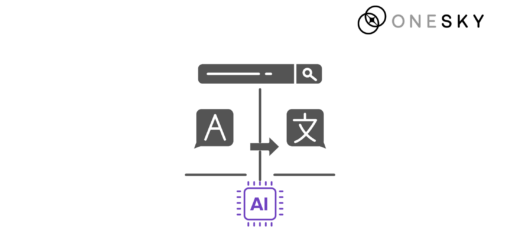



 Written by
Written by 


